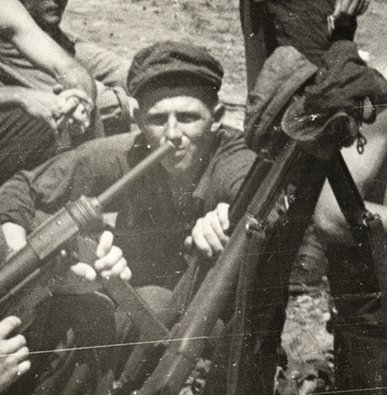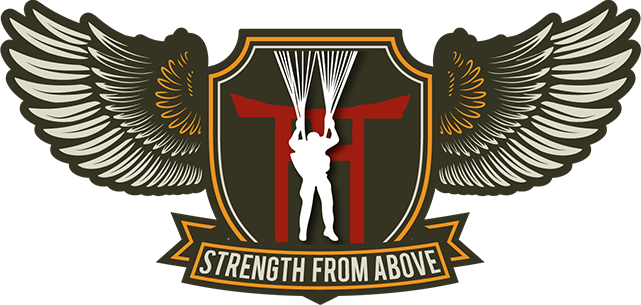Pfc. Bittorie, John H.

Machine Gunner, 1st Platoon, D Company, 511 PIR
Feb 14, 1921 – Jan 16, 1990 (Age 68) - gravesite
"There are two kinds of military reputations. One is official and on paper in Washington DC. The other is the one that goes from bar to bar from the mouths of those who served with you there." - Sergeant Major John Bittorie, 173RD Infantry Brigade Combat Team (Airborne), Vietnam, Apr 1968 – Mar 1969
Citations: Silver Star, Bronze Star, Purple Heart, Combat Infantryman Badge, Presidential Unit Citation, World War II Victory Medal, Philippine Presidential Unit Citation Badge, Philippine Liberation Medal with service star, the American Defense Medal, and the Asiatic-Pacific Campaign Medal with three Battle Stars and one Arrowhead
Much has been written about the heroic exploits to John Bittorie. He is justly entitled to space in the collection of D Company Stories.
John enlisted in the Army on 28 July 1942 and earned his Paratrooper Wings at Fort Benning in 1945 with the 505th PIR. John joined the 511th PIR in May 1943, and served with D Company throughout the New Guinea, Leyte and Luzon campaigns, including the Regiment’s combat jump at Tagaytay Ridge on 3 February 1945. He was wounded in the vicinity of Manila on 9 February 1945, and evacuated, but rejoined his Unit. John is most fondly remembered by his comrades for his participation in the famous “Rat’s Ass Charge”, which occurred on 22 December 1945.
D Company Commander, Captain Stephen E. Cavanaugh, in excerpts from his story, recalls that day:
“On the 22nd of December 1945, the 2nd Battalion was ordered to continue the attack to the west with the mission of linking up with the 7th Division at Ormac on the west coast of Elite. Despite numerous attempts by F Company to advance against strong enemy resistance, it was decided by Col Haugen to launch an early morning attack on the 22nd of December and D Company was given the mission. At 0400 hours in total darkness, rain and mist, D Company began to feel it’s way through the lines of F Company and along the spine of the ridge where the enemy was entrenched. The narrowness of the ridge precluded any sort of attack on a broad front so I placed the company in a column with the first platoon commanded by Lt. Carrico as the attacking element. In actuality, the company was attacking with a two or three man front.
“I was moving with the platoon leader, Lt. Carrico, behind the first squad when all of a sudden, out of the darkness, there was the sound of gun fire and a bursting grenade and a wild shout of “Rat’s Ass”, and the squad surged forward. The scouts had encountered an unsuspecting Japanese guard post whose occupants were relaxing with no apparent thought of any attack coming their way in the darkness and rain. The scouts promptly attacked the position with Pvt. (Bad Soldier) Bittorie firing his machine gun and shouting at the top of his lungs. I don’t think the clear story of what really happened that night will ever be known, since it occurred so suddenly in total darkness and rain. The true roles played by PFC Bittorie and Sgt. Taylor, a squad leader remain untold due to the deaths of the actual participants and the passage of time. What is certain however, is that the suddenness of the attack panicked the Japanese. With D Company at it’s heels the enemy sought to reestablish a defensive position against the attack but were hit before they could establish any resistance. This forward surge by the Company continued for two or three hours with the enemy running in desperation but losing the race. D Company probably killed at least 100 of the enemy while sustaining the loss of one man, Pvt. Sepulveda.
“With more bravado than sense, I sent a runner to the rear to inform the Battalion Commander that we had overcome the enemy with a bayonet charge and that he was on the run and that were in hot pursuit. Shortly after the runner returned, out of breath, with the orders to cease the attack, to stop, that another unit was to pass through us and continue the advance. Needless to say, I disregarded the order, feeling that if we paused the enemy would have a chance to regroup and establish defensive positions. Another messenger caught up with us and with some emphasis said that Battalion said to stop. Reluctantly, we halted and exhausted, hit the prone position along the trail…”
D Co Platoon Leader 1st Lieutenant Andrew Carrico recalls:
“I was behind Scouts Sepulveda and Sheffield. Capt. Cavanaugh had decided to move behind me, ad I was Platoon leader of the lead squad. With bayonets fixed, we moved along in the front of the enemy position. I heard the first shot fired, which was by a Japanese…and someone, Bittorie, (my machine gunner) shouted: “Rat’s Ass”. We started firing as we headed for the crest of the hill. Jungle foliage was thing, making it difficult to get through. We somehow kept together, fighting until about Noon, when Capt. Cavanaugh passed another Platoon through us and we were able to stop for a much needed rest. The next day, we carried our wounded down out of the mountains to the beach at Bito. For us, the action on Elite was over, and we would have a much deserved rest.”
From James W. Lorio, Editor, WINDS ALOFT:
“John Bittorie was discharged in November 1945 and reenlisted in February 1946, returning to jump status with the 505th PIR, 82nd Airborne Division at Fort Bragg. In 1951, he volunteered for the 9th Airborne Ranger Infantry. From 1951 – 1955, his duty overseas in the Ranger Department is still classified. Between 1958 – 1962, he was a lst Sgt, then a Sgt Major in April 1960, including Regt Sgt Major of the 505th in the 1st Airborne Battle Group in Germany. Many very high assignments followed: Sgt Major of the Eighth Army, Korea, 1964-1965; Sgt Major of the 1st Battalion, 327 Airborne Infantry, 101st Airborne Div, Vietnam, 1966-1967; Brigade Sgt Major, 173 Airborne Infantry Brigade, Vietnam, April 1968-1969, when promoted to Command Sergeant Major. Then, CSM Bittorie reached the zenith as CSM of the Infantry School, Fort Benning, May 1969-1971. With 29 years and 6 months in service, he retired in September 1971. He was overseas 4 years and 10 months during wartime and 5 years peacetime. He was on jump status continuously from Nov 1942 – Sept 1971, truly “Airborne All the Way!”
D Co Platoon Leader 1st Lieutenant Carrico continued:
"John Bittorie and I never saw each other again after the day I was wounded at Luzon on 13 March 1945. I was flown back to the United States for recovery. In the heat of that battle, it is easy to see how that happened.
"At any rate, I found out about the 511th Airborne Reunions in 1977, and my wife and I began to attend them. We were at the Regimental 40th Reunion at Ft Benning, Georgia, in June 1982 when I suddenly heard a voice from across the room calling out, as he came closer, “That’s my old platoon leader! I thought he was dead!” I realized the man was approaching me, and I instantly recognized him, too. It was John Bittorie! John had come up in the world! Before his retirement, he had been the Command Sergeant Major of the Infantry School, retiring in 1971. He had quite a bit of “pull” at Benning, and treated us old troopers royally! I spent quite a bit of pleasant time with John, catching up on the years that had passed."
Jane Carrico, wife to 1st Lt. Carrico added:
"It turned out we had another World War 11 trooper cross our paths that day. Bill Porteous had been in the action on Leyte, in Headquarters Company, 2nd Battalion, and he had become a sculptor after the war. Bill had never met John, but he was so inspired by the stories of the bravery of John Bittorie, that he cast a bronze statue of John, standing in his famous firing from the hip stance. Bill brought the statue to the Reunion and when he found out that John was alive and in attendance at the reunion , he was delighted to be able to meet him, and spend some time with him and Andy and other members of D Company."
The sometimes-troublemaker who a hero of the “Rat’s Ass” charge proved his mettle in combat time and time again. Following Japan’s surrender in 1945, Bittorie spent the next thirty years in the Army, ultimately retiring as a Command Master Sergeant.
Following his discharge in November of 1945, Bittorie chose to reenlist in February of 1946 and returned to jump status at Ft. Bragg with the 505th PIR, 82nd Airborne. He later volunteer for and served in the Rangers where the details of his overseas duties are still classified. Over the next decade, Bittorie moved up in rank from 1st Sergeant to Sergeant Major and Regimental Sergeant of the 505th in Germany. He was Sergeant Major of the Eighth Army in Korea, then in the 101st Airborne followed by a promotion to Brigade Sergeant Major in Vietnam (1968-1969) followed by Command Sergeant Major when he was stationed at the Infantry School at Ft. Benning where he had attend jump school over thirty years earlier. Bittorie retired from the service in September 1971, twenty-six years after arriving in Yokohama, Japan for occupation duty.
Bittorie was proud of maintaining his jump status from November of 1942 to his retirement.
Command Master Sergeant John Bittorie, his wife Erica and Andy Carrico and Jane remained good friends until Bittorie passed away on January 16, 1990 in Midland, Muscogee, Georgia. He is buried at the Fort Benning post cemetery.
If you would like to learn more about John's exploits within and the history of the 511th Parachute Infantry Regiment in World War II, please consider purchasing a copy of the book WHEN ANGEL'S FALL: FROM TOCCOA TO TOKYO, THE 511TH PARACHUTE INFANTRY REGIMENT IN WORLD WAR II, available in the regimental online store, on Amazon or wherever military history books are sold.
